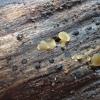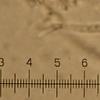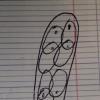
08-12-2025 21:04
Mark Stevens"Hello everyone,I'm relatively new to microscopy (

08-12-2025 18:59
 Lothar Krieglsteiner
Lothar Krieglsteiner
.. found by a seminar-participant, I do not know t

08-12-2025 17:37
 Lothar Krieglsteiner
Lothar Krieglsteiner
20.6.25, on branch of Abies infected and thickened

07-12-2025 16:07
Arnold BüschlenHallo, ich habe in einer Moos-Aufsammlung (epiphy

16-03-2014 22:00
Hello,I found this species a few months ago but ha

08-12-2025 13:39
Thomas Læssøehttps://svampe.databasen.org/observations/10572899

05-12-2025 17:33
 Bruno Coué
Bruno Coué
Bonjour, je serais heureux de recueillir votre avi
Orbilia
Yannick Mourgues,
18-11-2019 00:03

Bonsoir.
A friend of mine has transmetted to me pictures of an Orbilia for ID. But with informations he has given to me, I don't know...
Data :
Ascus without croziers, apex rounded sometimes truncated. x8 spored.
Spores ovoides 3,7-4 x 1,5-2,1 um Q=1,8-2,5
Spores with a black point (guttule ?) at one end. The first four black points are directed to the base, the four to the apex.
Paraphyses capitate.
Any Idea ?
Hans-Otto Baral,
18-11-2019 08:53

Re : Orbilia
This looks much like the common O. tremulae. Earlier I would have said O. eucalypti, but O. tremulae differs in smaller spores not exceeding 4 x 2 µm, and often yellowish apothecia, together with a lack of drought-tolerance (growing on moist wood on the ground). Genetically it is very distant from O. eucalypti. Its anamorph also differs and matches morphologically Dicranidion inaequale.
Yannick Mourgues,
18-11-2019 09:21

Re : Orbilia
Thank's a lot Zotto.
Yannick



